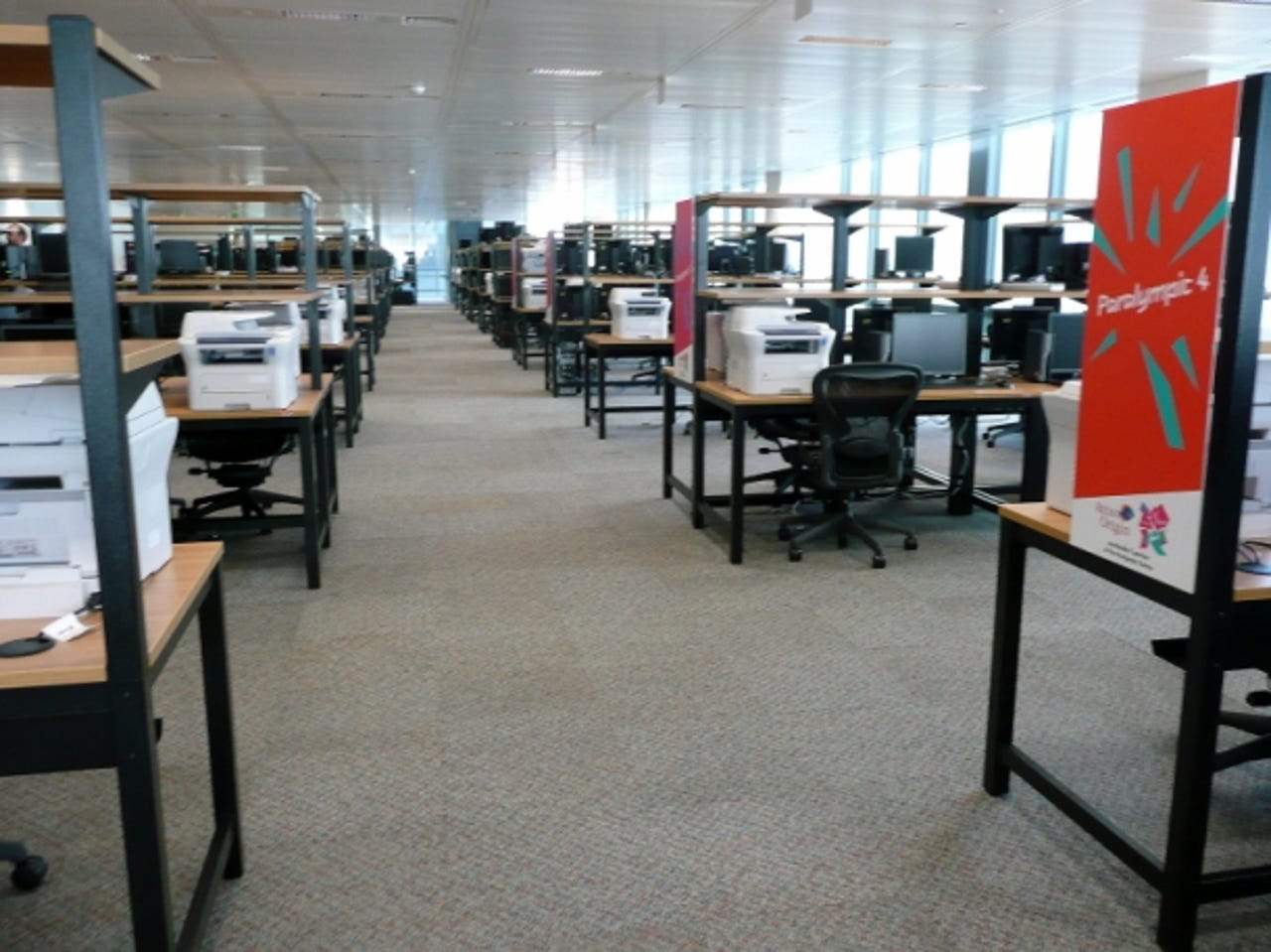Photos: Inside London 2012 Olympic Games tech lab


IT staff put Olympics tech through its paces...
This is the hub where the technology for the London 2012 Olympic and Paralympic Games is being put through its paces.
Computing equipment in the Olympics Technology Lab will undergo 200,000 hours of testing that will last until close to the opening ceremony next year.
The Technology Lab contains all the software needed to manage and relay results from the 36 Olympic competition venues.
Testing began in November 2010, with simulations for seven sports, including athletics, basketball, tennis, volleyball and the triathlon.
The lab contains 880 PCs and 130 servers spread over 2,000 square metres.
Technicians are running simulations of every event that will take place at the Games to test for potential software and usability errors.
The lab is divided up into testing areas, with one for each of the 26 sports in the Games.
Speaking yesterday at an event in London to launch the Olympics Technology Lab, chairman of the London 2012 Games and four times Olympic medal-winning runner Sebastian Coe described why testing is such a vital part of the preparations.
"We cannot allow anybody who spends half their life in pursuit of their big moment in 2012 to have that unravel because of the shortfall of our teams," he said
Coe said he had been at the mercy of faulty technology himself, revealing that the record-breaking 800 metres time he set in 1981 had to be confirmed using stopwatches after a timing system failed.
This is the testing area for the London Olympics tennis events, which will be staged at Wimbledon.
The computers and software tested in the lab are the ones that will be used to run the Games in July 2012.
Before the opening ceremony, lab systems will perform two simulations of the entire Olympic Games.
This is the software that will be used to schedule tennis matches at the Olympics.
Olympics officials will be able to set the order of play for different courts by dragging and dropping the names of tennis players into the different columns.
The draw display software seen here can be used by officials to see the order of play for each round and the results from each match.
This is a mock-up of the display that will appear on one of a number of large screens positioned at various locations around Wimbledon.
This system will be used by volunteers to update information from tennis matches before it is sent on to the central results system, known as the On Venue Results (OVR) system.
Volunteers will receive data from umpires, who key in the latest results from tennis matches using PDAs, then volunteers will add in details, such as whether a shot was an ace.
Volunteers then send the information to the OVR, which forwards it to the various systems that relay results and Olympic information across the globe.
Accredited media, officials and athletes will be able to use the Info+ intranet, seen here, to access competition schedules, results, medal rankings, transport news and sports records.
Results will be available within 0.5 of a second of being recorded and a remote version will also be available to accredited users via the internet.
This is the Commentator Information System (CIS), which is used to send results and other information to commentators at Olympic venues within 0.3 of a second of the result arriving.
A remote version of the system will be accessible over the internet by accredited media across the world.
The availability of information via CIS will mean that fewer results are printed out on paper than at previous Olympics, helping meet London 2012's green aspirations.